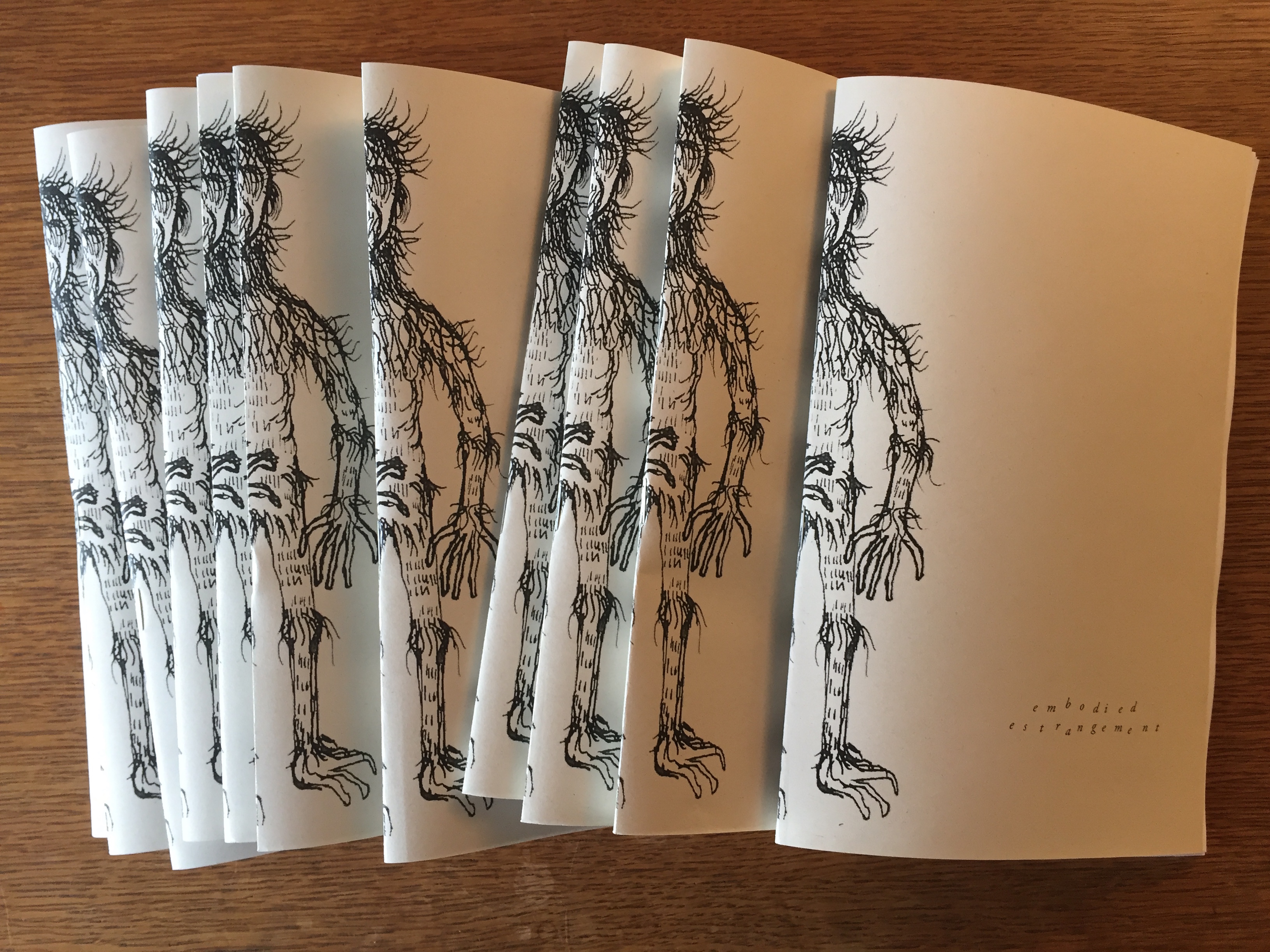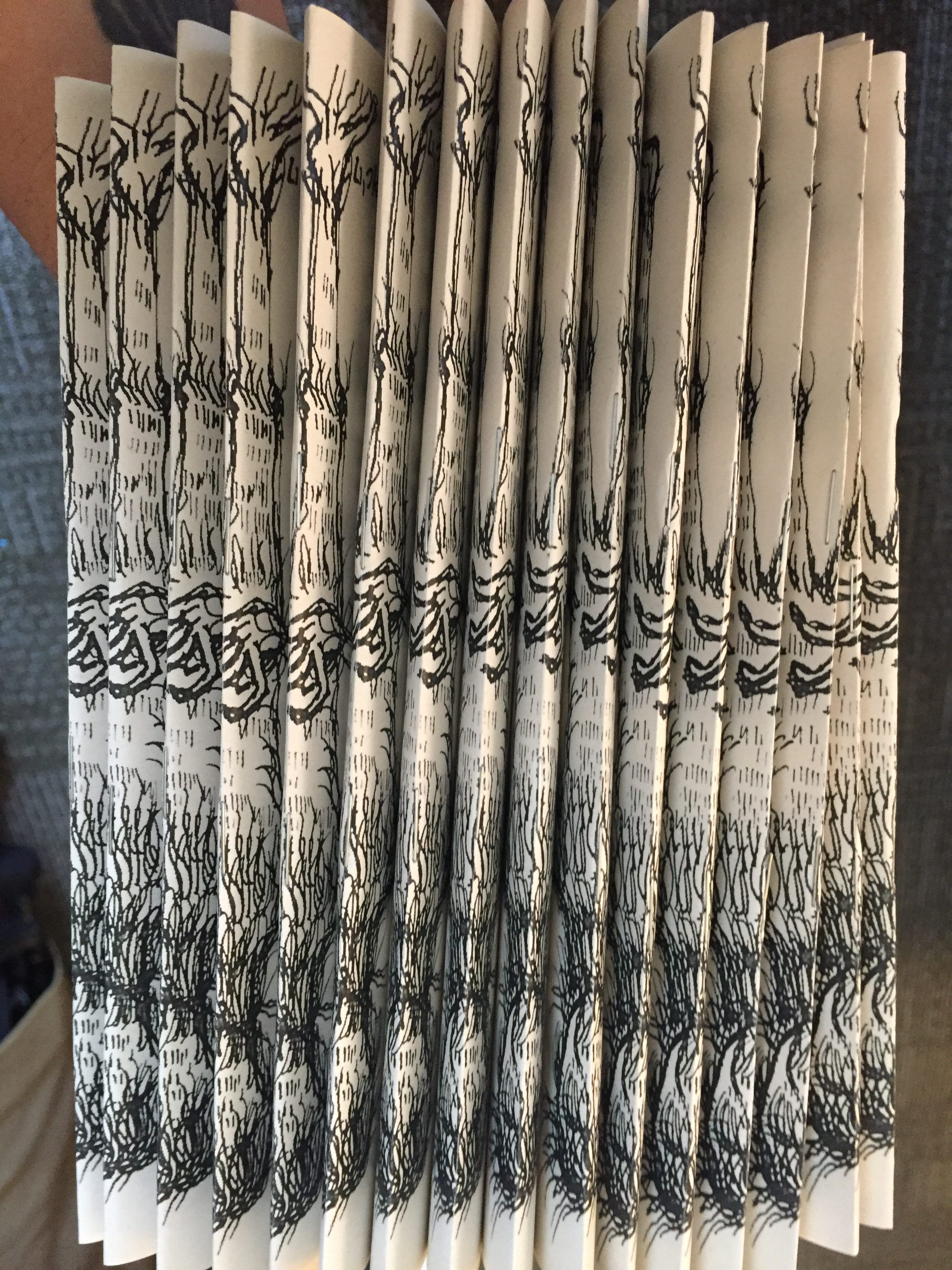Winter quarter has come to end. And as a way to mark the work, ideas, and discussions my students in WGS 410/510: “Speculative and Science Fictions of Color” engaged, I created a little literary journal for the class. Embodied Estrangement, a term one of my graduate students coined, playing on Darko Suvin’s notion of cognitive estrangement, is the journal’s title. Here is the preface to the collection:
The included drawings and writings are inspired by to assignments for the course WGS 410/510: “Speculative and Science Fictions of Color” in the Women’s and Gender Studies Department at the University of Oregon. These creative responses ask students to create their own art to repurpose and demonstrate the ideas, goals, and critiques of the literatures of the course.
Imagining the Oankali
For this exercise, draw or create a one-page visual representation (8.5” x 11”) of what you imagine Octavia Butler’s Dawn’s “Oankali” to look like, be like, act like, live like. How do you represent or convey something conveyed only through words, inferences, and expectations? Consider the initial descriptions of Jdahya: “His tentacles seemed to solidify into a second skin—dark patches on his face and neck, a dark, smooth-looking mass on his head…He looked remarkably human now. Was it only the tentacles that gave him that sea-slug appearance? His coloring hadn’t changed. The fact that he has no eyes, nose, or ears still disturbed…His skin was cool and almost too smooth to be real flesh…” (23). You can hand draw, use mixed media (but keep it flat), use digital tools. Be creative and think critically. Given that one of the central tensions in Dawn is a decentering of the “human,” consider what it means to try to represent something alien, monstrous, different, nonhuman, posthuman, even inhuman. We will collect your representations and scan them for the class blog.
Short Short SF Story
According to Wikipedia, short short fiction contains “the classic story elements: protagonist, conflict, obstacles or complications, and resolution. However, unlike the case with a traditional short story, the limited word length often forces some of these elements to remain unwritten, that is, hinted at or implied in the written storyline. This principle, taken to the extreme, is illustrated in a possibly apocryphal story about a six-word flash allegedly penned by Ernest Hemingway: ‘For sale: baby shoes, never worn’” (http://en.wikipedia.org/wiki/Flash_fiction). For this exercise, you will think about all of the speculative and science fiction we have read so far in class as inspiration for your own short short story. Like poetry, short short fiction (sometimes called flash fiction) is all about compression of language, about telling details, and about careful decisions about what to show, to leave out, or leave inferred. You have up to 500 words (only) to develop setting, character, plot, and purpose. What will your story be about? Who will your story be about? How will you build a science fictional world? Choose your words wisely.

